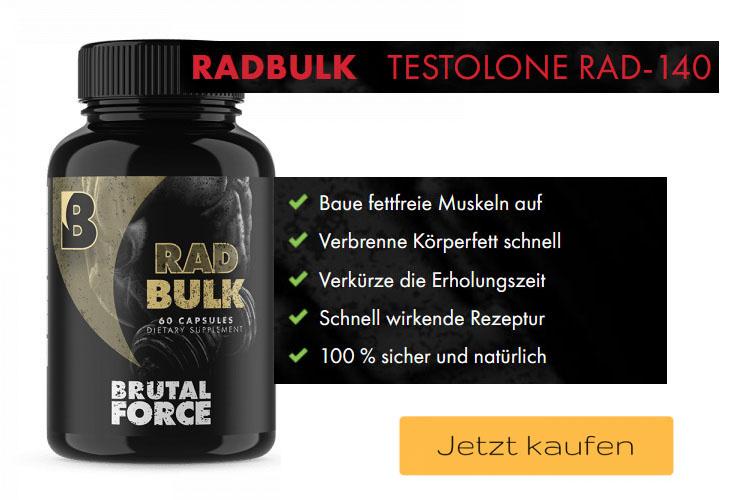SARMs Deutschland – Das Ultimative Ergänzungsmittel für Bodybuilder!
Regelmäßiges Training, eine gesunde Ernährung und genügend Schlaf sind die Grundlage für Fitnessliebhaber. Selektive Androgenrezeptor-Modulatoren (SARMs) sind für viele Bodybuilder eine sehr beliebte Ergänzung geworden.
Im Bereich des Bodybuildings empfinden viele Menschen leistungssteigernde Drogen oftmals als Schummeln und viele dieser Drogen sind auch nicht gerade ungefährlich.
In den letzten zehn Jahren wurde jedoch hart an einer neuen Klasse leistungssteigernder Medikamente gearbeitet, welche unglaubliche Wirkungen versprechen und zwar den SARMs.
Bei den SARMs handelt sich um androgenrezeptorbindende Substanzen, die viele Vorteile mit sich bringen. Was genau SARMs sind, woher sie stammen, wie sie funktionieren und was sie so besonders macht wird.
Was steckt hinter den SARMs?
SARMs (Selective Androgen Receptor Modulators) werden schon seit den letzten 75 Jahren erforscht. In den letzten 20-25 Jahren wurde jedoch noch intensiver an diesen neuen Drogen gearbeitet und viele Medikamentenkonzerne hoffen, dass diese erfolgsversprechenden Medikamente endlich zugelassen werden.
Sie sollen vorallem zur Behandlung der Knochen- und Gelenksgesundheit, Muskelschwund, Appetitanregung und als Hormonersatz dienen.
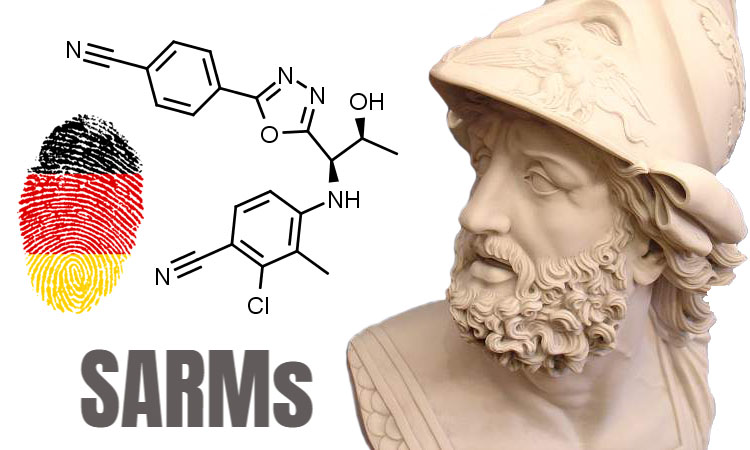
Die Enthüllung der SARMs war natürlich ein echter Durchbruch – nicht nur in der Medizin, sondern auch im Anti-Aging. Im Bereich der Androgentherapie sind bisher leider fast keine wirklich sicheren Medikamente, ohne gefährlichen Nebenwirkungen, auf dem Markt und genau deshalb sind SARMs ein unglaublicher Erfolg.
Das Ziel der SARMs Forscher ist es nämlich einen Androgenrezeptoragonisten zu entwickeln ohne androgene Aktivitäten und daran wird auch jetzt noch hart gearbeitet. Zweck dieser Medikamente ist es nicht nur schneller Muskel aufzubauen, sondern auch dem Muskelschwund im Alter entgegenzuwirken, an dem viele Bodybuilder erst später an leiden.
Was sind SARMs
SARMs sind Medikamente, die den Muskelaufbau unterstützen und die Fettverbrennung anregen und sind deshalb auch stark mit Steroiden zu vergleichen. Das Positive an ihnen ist jedoch, dass sie keine negativen Nebenwirkungen wie Hodenverkleinerungen, Leberkrankheiten oder Haarwuchsstörungen mit sich bringen.
SARMs wirken gezielt auf Hormone und beweisen sich wirkungsstark im Muskelaufbau und in der Fettverbrennung. Es sind noch keine wirklichen langzeit-Forschungen vorhanden, die die Sicherheit dieser leistungssteigernden Drogen garantieren können, jedoch scheinen sie bis jetzt sehr erfolgsversprechend.
SARMs sind noch nicht voll zur medizinischen Verwendung zugelassen, jedoch wird es nicht mehr lange dauern bis es zu einer endgültigen Legalisierung kommt.
Welches SARMs ist das beste
Es gibt eine ganze Reihe an unterschiedlichen SARMs, darunter:
Ligandrol (LGD-4033)
Dein Ziel ist es, schnell Muskelmasse aufzubauen und Fett zu verbrennen? Dann hast du sicher schon einmal den Namen SARMs gehört, oder?
In den letzten Jahren hat sich so einiges in der Entwicklung von SARMs (Selektive Androgen-Rezeptor Modulatoren) getan. Eines der beliebtesten SARMs ist Ligandrol, welches gerne von Bodybuildern als Alternative zu anabolen Steroiden eingenommen wird um sich beim Krafttraining einen kleinen Vorteil zu verschaffen und schneller Muskelmasse aufzubauen.
Das Produkt hilft nicht nur dabei Muskeln aufzubauen, sondern auch Fett zu verbrennen, Muskelschwund zu heilen und Knochen zu stärken. Was genau LGD ist, wie es wirkt und warum es so beliebt ist, kann in diesem Artikel gelesen werden.
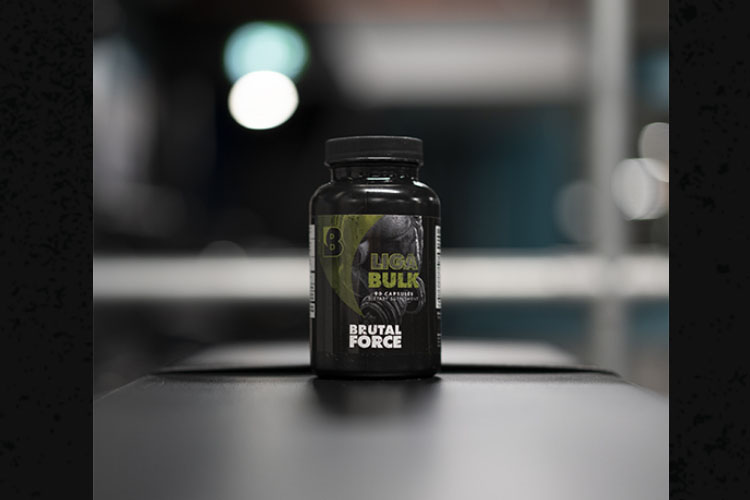
Ligandrol gehört zu der Familie der SARMs (Selektive Androgen-Rezeptor Modulatoren) und wurde ursprünglich für die Behandlung von Muskelschwund von Krebspatienten entwickelt. Es wurde auch gegen erhöhten Muskelabbau bei chronischen Krankheiten verwendet.
LGD-4033 wirkt sich positiv auf den Muskelaufbau, die Körperzusammensetzung, Knochendichte und den Sexualtrieb aus. Die Droge kann mit Testosteron verglichen werden, jedoch ohne gefährliche Nebenwirkungen. Ligandrol wirkt ausschließlich auf Muskel- und Knochenzellen, weshalb die Nebenwirkungen auch so gering sind.
Es handelt sich dabei um Pulver, welches oral eingenommen werden kann und den Kraftaufbau, sowie das Zulegen an Muskelmasse und die Fettverbrennung unterstützt. LGD kommt auch in der Medizin zum Einsatz, da es den Muskelheilungsprozess beschleunigt.
Ligandrol wird aufgrund seiner tollen Wirkung gerne von Kraftsportlern als Ergänzungsmittel eingenommen. Es kann von Männern als auch von Frauen verwendet werden, wobei sich die Dosierungen natürlich etwas unterscheiden.
Wie wirkt Ligandrol?
Ligandrol wirkt als Ergänzungsmittel und verhilft Kraftsportlern und Athleten dabei ihre Ziele schneller zu erreichen. Dabei funktioniert das Pulver so ähnlich wie Testosteron und zwar bindet es an Androgenrezeptoren.
Ligandrol wirkt jedoch sehr selektiv und bindet nur an ganz bestimmte Rezeptoren, weshalb die Nebenwirkungen nur sehr gering sind und es trotzdem zu ausgezeichneten Ergebnissen führt.
Wichtig ist es, das Pulver von sicheren und geprüften Orten zu erwerben und die Finger vom Schwarzmarkt zu lassen. Ligandrol wurde bisher zum Großteil nur an Tieren getestet, jedoch gibt es eine Studie beim Menschen. Diese Studie bestätigte, dass das Pulver gut verträglich ist und die Ergebnisse äußerst erfolgsversprechend sind.
Wenn du also gerne Muskeln aufbauen möchtest, ist Ligandrol sicher genau das Richtige für dich. Ligandrol unterstützt den Muskelaufbau, den Fettabbau, die Kraftsteigerung, die Leistungssteigerung und den Heilungsprozess.
Gesundheitsbewusste Bodybuilder greifen wirklich gerne zu SARMs, da anabole Steroide Gefahren für die Gesundheit darstellen und Selektive Androgen-Rezeptor Modulatoren eine sicherere Option sind.
Für wen eignet sich Ligandrol?
LGD-4033 kann für viele verschiedene Gründe eingenommen werden und ist ein sehr starker und nützlicher Androgenrezeptor, der viele Vorteile mit sich bringt.
Das Pulver wirkt nicht nur im Bodybuilding äußerst vorteilhaft, sondern auch im medizinischen Bereich.
LGD-4033 in der Medizin
Ligandrol wirkt gegen Osteoporose
Osteoporose ist eine Krankheit, bei der Patienten stark unter Muskelschwund leiden. Die Körperknochen werden hierbei sehr schwach und es kann sogar zu Knochenverlust kommen. Normalerweise wird Osteoporose mit einer Hormonersatztherapie behandelt, jedoch kommt diese mit erhöhten Risiken für diverse Erkrankungen, wie Gallenblasenerkrankungen und Thromboembolien.
SARMs wirken jedoch sehr positiv auf BMD und können dabei helfen, die Knochen wiederaufzubauen. Ligandrol kann somit sowohl von Männern als auch von Frauen eingenommen werden und hilft dabei die Knochenmasse und die Knochenstärke intakt zu halten.
Ligandrol wirkt gegen Kachexie
Kachexie tritt häufig bei Patienten auf, die unter Krebs, Nierenerkrankungen und AIDS leiden. LGD-4033 erhöht die Kraft und auch die Muskelmasse, weshalb es in der Lage ist Kachexie zu verhindern bzw. zu vermindern.
LGD-4033 im Bodybuilding
Ligandrol erhöht die Muskelmasse
Das Pulver beschleunigt bei einer regelmäßigen Einnahme die Zunahme an Muskelmasse. Außerdem ermöglicht es dem Körper mehr Energie zu produzieren und regt die Blutzirkulation an, die beim Aufbau der Muskeln eine große Rolle spielt. Ligandrol baut Muskeln auf eine etwas langsamere, jedoch sichere und effektive Weise auf.
Ligandrol steigert Muskelstärke
Das Pulver stärkt die Knochen und hilft somit auch gegen Osteoporose und anderen Krankheiten. Viele Menschen leiden an Muskelschwund, wobei Ligandrol ein ideales Heilungsmittel darstellt, da es die Knochen effektiv stärkt und wiederaufbaut. Die Größer der Muskeln ist eine Sache, auf die Muskelstärke ist jedoch nicht zu vergessen.
Ligandrol erhöht die Körperenergie
Durch die Einnahme dieses leistungssteigernden Pulvers wird der Testosteronspiegel im Körper erhöht. Dies bewirkt eine höhere Fettverbrennung und somit mehr Energie, diese der Körper für verschiedenste Zwecke, wie Atmung und Verdauung, benötigt. Viele Bodybuilder lieben einen Extra Kick vor dem Training, wofür Ligandrol genau das Richtige ist.
Ligandrol vs. anabole Steroide
SARMs haben einige Vorteile gegenüber den gefährlichen und illegalen anabolen Steroiden, die jedoch trotzdem oft im Kraftsport eingesetzt werden. So sind SARMs eine wesentlich sicherere Alternative. Selektive Androgen-Rezeptor-Modulatoren stimulieren Androgenrezeptoren, ähnlich wie auch das Testosteron.
Ligandrol hat jedoch eine äußerst selektive Eigenschaft und bindet sich somit nur an ganz bestimmtes Gewebe, im Gegensatz zu anabolen Steroiden. SARMs gehören zur neuesten Klasse der Ergänzungsmittel im Fittnessbereich und sind ein unglaublicher Erfolg.
Sie sind jetzt schon sehr beliebt in der Fitnesswelt, auch wenn sie noch nicht offiziell als Ergänzungsmittel zugelassen wurden. Es sollte jedoch nicht mehr lange dauern, bis es zu einer Legalisierung kommt. Hier sind die Vorteile von Ligandrol noch einmal zusammengefasst:
- Anabole Steroide funktionieren, indem sie sich in vielen Geweben binden und sich so auf den Körper auswirken.
- Ligandrol auf der anderen Seite bindet nur an ganz bestimmten Geweben und schafft somit keine Unruhe im Körper.
- Anabole Steroide kommen mit schweren Nebenwirkungen, wie Prostatahyperplasie, unerwünschter Haarwuchs, Akne, Impotenz und noch viele weitere.
- Ligandrol kann ganz einfach oral eingenommen werden im Gegensatz zu anabolen Steroiden, welche gespritzt werden müssen.
Hat Ligandrol Nebenwirkungen?
Die Nebenwirkungen dieser leistungssteigernden Droge sind sehr gering, aufgrund der selektiven Eigenschaften. Jedes Medikament mit einer effektiven Wirkung kommt jedoch auch mit Nebenwirkungen, welche beispielsweise dann auftreten, wenn die Einnahmeempfehlungen nicht eingehalten werden. Deshalb ist es äußerst wichtig diese genauestens zu beachten.
Eine der Hauptnebenwirkungen ist eine geringe Testosteron Unterdrückung, welche aber meist nur in den ersten 1-2 Wochen nach Anwendung auftretet. Eine weitere Nebenwirkung sind niedrige Globulinwerte.
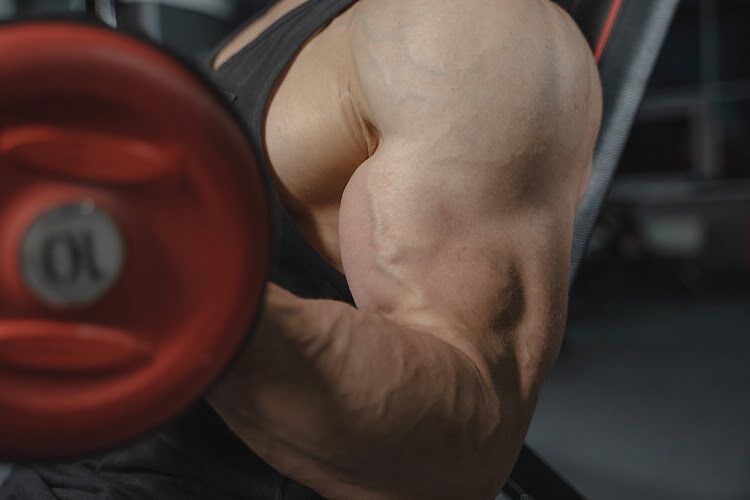
Ligandrol ist frei von chemischen Substanzen und anderen gefährlichen Zusatzstoffen, welche die Einnahme des Pulvers effektiv und sicher machen. Bis jetzt wurden noch keine Nebenwirkungen gemeldet und somit ist Ligandrol ein sehr zu empfehlendes Ergänzungsmittel für Sportler jeder Art.
Wie wird Ligandrol dosiert?
Durchschnittlich sollten 5-10mg des Pulvers täglich eingenommen werden. Der Zyklus beträgt 6-12 Wochen, wobei die Dosierung nach dem dritten Zyklus auch erhöht werden kann. Bei einem größeren Körperbau müssen natürlich höhere Dosierungen eingenommen werden, um bessere Ergebnisse zu erreichen.
Die Körpermasse und die Intensivität des Trainings spielt bei der Dosierung somit eine wesentliche Rolle. Jedoch ist nicht zu vergessen – je höher die Dosierung – je höher das Risiko auf Nebenwirkungen. Deshalb sollten die Einnahmeempfehlungen genauestens beachtet und nicht überschritten werden.
Ist LGD-4033 legal?
Ligandrol wurde bis jetzt noch nicht als Ergänzungsmittel zugelassen, jedoch wird hart daran gearbeitet das Produkt endlich zu legalisieren und bis dahin sollte es auch nicht mehr lange dauern.
Ligandrol ist definitiv sehr empfehlenswert und ein sehr beliebtes Ergänzungsmittel im Bereich des Bodybuildings. Es dient zum Aufbau von Körpermasse und beweist sich mit erstaunlichen Ergebnissen. SARMs haben unglaubliche Vorteile und sind nicht gesundheitsschädlich wie illegale anabole Steroide.
Für fitnessbewusste Menschen haben SARMs ein hohes Potential und helfen dabei die Fitnessziele schneller zu erreichen. Ligandrol hilft dabei schnell Muskelmasse zu gewinnen, Fett abzubauen, den Heilungsprozess zu beschleunigen und Knochen zu stärken.
Das Pulver sorgt außerdem auch noch für einen anständigen Energieschub und erhöht somit auch die Motivation zu trainieren. Somit hilft das Pulver definitiv dabei einen muskulösen Körperbau zu entwickeln, auf den man stolz sein kann. Ligandrol empfiehlt sich für Kraftsportler jeder Art und auch anderen Athleten und Sportbegeisterten.
Ostarine (MK-2866)
Fast jeder Mann wünscht sich stark geformte Muskeln und eine verstärkte Motivation beim Training. Klar hilft ein regelmäßiges Workout kombiniert mit einer vollwertigen Ernährung mit ausreichenden Proteinen, jedoch gibt es heutzutage auch unglaubliche wirkungsvolle Ergänzungsmittel, die dabei helfen Ziele schneller und effektiver umzusetzen.
Dazu gehört auch Ostarine MK-2866. Hierbei handelt es sich um ein Selektives Androgenrezeptor-Modulator, welches erfolgsversprechende Wirkungen mit sich bringt. Was genau Ostarine ist, wie es wirkt, wie es eingenommen wird, was es zu beachten gibt und welche Vorteile es mit sich bringt, wird in diesem Artikel diskutiert.
Was ist Ostarine?
Ostarine, oder auch MK-2866 genannt, ist ein SARM (Selektives Androgenes Rezeptor-Modul), welches ursprünglich von dem Pharmaunternehmen GTX entwickelt wurde, um Muskelschwund zu behandeln. Heutzutage findet es jedoch in vielen Bereichen seine Anwendung und ist vor allem im Kraftsport sehr beliebt.
Es handelt sich bei Ostarine um eines der stärksten Phormonen der SARM-Familie. Diese Droge hat viele positive Wirkungen und wird deshalb in verschiedensten Sportarten als Ergänzungsmittel eingenommen.
Ostarine fördert den Muskelaufbau und hilft gleichzeitig Fett abzubauen. Dieses Produkt der SARM-Familie zählt zu den potentesten und anabolsten SARMs, welches es derzeit auf dem Markt zu erwerben gibt. Es kann sowohl von Anfängern, Frauen aber auch von Profi Bodybuildern verwendet werden. Personen die an Krankheiten, wie Osteoporose leiden, können ebenfalls von diesem Produkt profitieren.

Ostarine gehört zu den stärksten SARMs, die es derzeit auf dem Markt gibt. Das besondere an den sogenannten SARMs sind die geringen Nebenwirkungen. Selektive Androgenrezeptor Modulatoren sind eine neu entwickelte Klasse von Bindungspartnern für Androgenrezeptoren. Ziel dieser Produkte ist es, die gleiche Wirkung zu erzielen, wie bisher bekannte anabole Steroide jedoch ohne, den vielen Nebenwirkungen.
SARMs haben die besondere Eigenschaft gezielt und selektiv auf Hormone zu wirken. So haben diese Produkte eine äußerst positive Wirkung auf das Muskelgewebe und sind wirkungsstark in der Fettverbrennung.
Dies funktioniert, indem SARMs anstelle eines Androgens wirken und sich somit positiv auf das Muskelgewebe auswirken können, gleich wie auch ein anaboles Steroid (beispielsweise männliches Hormon Testosteron).
Für wen eignet sich Ostarine?
Viele Männer haben Schwierigkeiten unerwünschte Ablagerungen von Fetten loszuwerden. Diese Fettdepots befinden sich meist rund um den Bauch, die Taille, an den Oberschenkel, Armen oder im Brustbereich. Hier kommen Ostarine zum Einsatz.
Ostarine zählen zu den effektivsten SARMs und helfen dabei Muskeln aufzubauen und unerwünschte hartnäckige Fettablagerungen zu verbrennen. Das Produkt wirkt, indem es Androgenrezeptoren gezielt beeinflusst, ohne dabei auf die restlichen Organe des Körpers zu wirken.
Ostarine können auch nicht in gefährliche Hormone umgewandelt werden, wie es bei Steroiden der Fall ist. So entstehen auch keine gefährlichen Nebenwirkungen.
Ostarine können vor allem für den Muskelaufbau eingesetzt werden und haben in der Schneidphase ein besonders großes Potential. Das Produkt hilft auch bei der Wiedervereinigung fettarme Muskelmasse aufzubauen. Ostarine wird aber auch im Neuaufbau eingesetzt und dient zur Prävention von Verletzungen. Das Pulver ist ebenso sehr hilfreich sich von Verletzungen, wie Sehnen- und Knochenverletzungen schneller zu erholen.
Es findet auch zur Vorbeugung von Verletzungen seinen Einsatz. Ostarine kann genauso gut von Frauen eingenommen werden, wobei natürlich andere Einnahmeempfehlungen zu beachten sind.
Wie wirken Ostarine?
Ostarine fördert den Muskelaufbau und den Fettabbau. Dies bewirkt eine Leistungssteigerung und hilft bei diversen Diäten. Außerdem kommt es bei einer regelmäßigen Einnahme dieses Produktes zu einer schnelleren und besseren Regeneration und einer Steigerung der Libido.
Wer an Gelenksschmerzen leidet, wird sich durch die Einnahme von Ostarine wesentlich besser fühlen. MK-2866 hilft auch Muskelschwäche zu behandeln.
Für eine sichtbare und spürbare Wirkung von Ostarine, muss dieses mindestens zwei Wochen regelmäßig eingenommen werden. Anschließend sollte das Training wesentlich fokussierter und leichter verlaufen. Durch die schnellere Regeneration der Muskeln können auch ohne weiteres zusätzliche Trainingseinheiten eingeführt werden.
Ebenfalls sichtbar werden Steigerungen in der Kraft und eine optisch verstärkte Vaskularität. Der Körper wirkt definitiv deutlich massiger, obwohl es zu einem leichten Gewichtsverlust kommen kann.
Die Funktionsweise unterscheidet sich nicht stark von der der Steroiden, jedoch treten bei der Einnahme von Ostarine keine schweren Nebenwirkungen auf. Ostarine (MK-2866) ist sicher für den Körper und liefert ein natürliches Ergebnis, ohne andere Gewebe und Organe des Körpers zu schädigen oder zu beeinträchtigen.
Hier noch einmal alle Wirkungen gelistet:
- Muskelaufbau
- Fettabbau
- Kraftsteigerung
- Leistungssteigerung
- unterstützt den Diätverlauf
- Schnellere Regeneration der Muskulatur
- Steigerung der Libido
Ostarine vs. anabole Steroide
Anabole Steroide werden von vielen Bodybuildern eingenommen, um den Muskelaufbau zu beschleunigen. Es handelt sich bei anabolen Steroiden jedoch um ein ziemlich gefährliches Medikament, bei dem häufig schlimme Nebenwirkungen auftreten. Zu diesen zählen Impotenz, Akne, unerwünschter Haarwuchs, Schrumpfhoden und noch viele weitere.
Ostarine gehört zur Gruppe der SARMs und dabei handelt es sich um eine sicherere Alternative im Vergleich zu anabolen Steroiden, da sie ein wesentlich geringeres Risiko von Nebenwirkungen aufweist. Selektive Androgen-Rezeptor-Modulatoren stimulieren Androgenrezeptoren, sowie auch das männliche Hormon Testosteron.
Der Unterschied ist jedoch, dass SARMs nicht so stark ausgeprägt sind, wie die der anabolen Steroide. So haben sie zwar einige der muskelaufbauenden Eigenschaften wie anabole Steroide, jedoch unterscheiden sie sich in ihrer selektiven Wirkungsweise. SARMs wirken nicht auf alle Rezeptoren, sondern nur auf ganz bestimmte, was sie für unseren Körper wesentlich sicherer macht.
Über Leber oder Prostata muss man sich bei der Einnahme von Ostarine nämlich keine Sorgen machen. SARMs wirken natürlich nicht so schnell und effektiv wie illegale Anabolika, jedoch sind ihre Ergebnisse trotzdem deutlich sichtbar und spürbar. Ostarine gehören zu den beliebtesten Arten der SARMs.
SARMs haben somit wesentliche Vorteile gegenüber anabolen Steroiden: Sie fördern eine anabole Wirkung, es sind keine Injektionen erforderlich, da die Einnahme über den Mund erfolgt, es besteht kein Risiko auf Haarausfall oder unerwünschten Haarwachs, es erfolgt keine Umstellung auf DHT (Dihydrotestosteron), sie sind in den USA legal zu erwerben, sie haben weniger Risiko auf androgene Wirkungen und weniger Lebertoxizität und konvertieren nicht in Östrogen.
Vorteile von Ostarine
Ostarine kann dabei helfen Muskelmasse aufzubauen. Nicht nur Kraftsportler, sondern auch beispielsweise Krebspatienten haben von dem hochwertigen Pulver bereits profitiert. Aufgrund seiner Fähigkeit, gezielt zu arbeiten, gelangt es schnell zu verschiedensten Bereichen des Körpers. So kommt es schon in nur kurzer Zeit zu deutlich erkennbaren Ergebnissen.
Ostarine können auch die Stärke und Kraft verbessern. Das Produkt hilft somit nicht nur Muskeln aufzubauen, sondern auch stärker zu werden.
Das Pulver kann aber auch in verschiedensten Heilungsprozessen helfen. Viel zu oft enden Trainings mit Verletzungen, die zu einer echten Belastung werden können. In Situationen wie diesen sind Ostarine ein wahres Wundermittel, da sie den Heilungsprozess definitiv beschleunigen. Es wirkt sehr positiv bei der Heilung von Sehnen- und Knochenverletzungen.
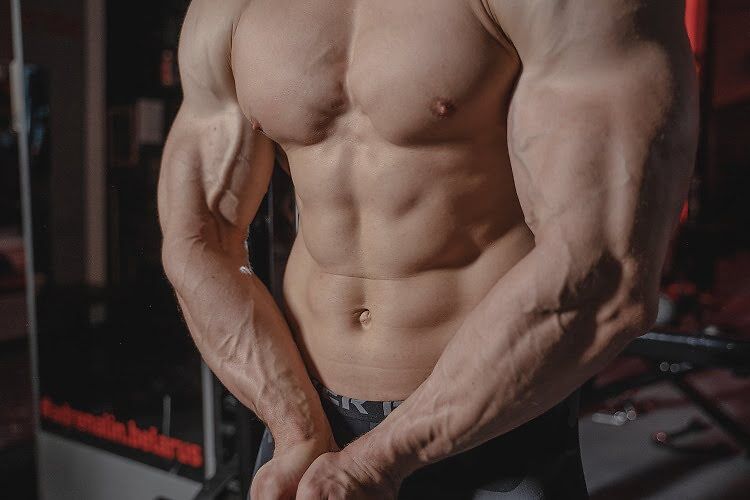
Das Produkt kann auch die Ausdauer wesentlich verbessern. Die Ausdauer ist eines der größten Ziele aller Fitnessliebhaber und oft nicht einfach zu erreichen. Mit einer Einnahme über vier Wochen kann die Ausdauer schon um einiges erhöht werden.
Ostarine kann auch dabei helfen Osteoporose zu heilen. Hierbei handelt es sich um eine Krankheit, bei der die Knochen sehr schwach werden und meist auch schmerzen. Patienten, die an dieser Krankheit leiden, leiden häufig unter Frakturen und Knochenverletzungen. Ostarine ist in solchen Fällen sehr empfehlenswert, da es die Knochen stärkt und wiederaufbaut.
Können bei der Einnahme von Ostarine Nebenwirkungen auftreten?
SARMs zeigen meist keine Nebenwirkungen oder nur sehr wenige, was diese Produkte auch so beliebt und besonders macht. So sollten bei der richtigen Einnahme von Ostarine im Normalfall keine Nebenwirkungen auftreten.
Es kann jedoch in seltenen Fällen zu erhöhter Müdigkeit, Stimmungsschwankungen oder leichten Aggressionen führen. Wenige Anwender berichten auch über einen leicht erhöhten Blutdruck. Grundsätzlich sind Anwender von Ostarine jedoch sehr zufrieden mit dem Produkt und erstaunt über die schnellen und deutlich sichtbaren Ergebnisse.
Eine steigernde Motivation, mehr Kraft beim Training und eine wesentlich sichtbare Verbesserung der Figur, machen dieses Produkt wirklich sehr beliebt bei allen Fitnessliebhabern. Um eventuelle Nebenwirkungen zu vermeiden, ist es wichtig die Einnahmeempfehlungen genauestens zu beachten. Diese variieren jedoch zwischen Mann und Frau und der Sportintensität.
Dosierung von Ostarine MK-2866
Bei Ostarine handelt es sich um ein Pulver, welches oral eingenommen wird. Durchschnittlich werden 20-25mg täglich eingenommen, um das Wachstum der Muskeln anzukurbeln. Sehr schwere Personen können auch 30mg täglich zu sich nehmen.
Die meisten Ostarine Produkte empfehlen eine 6 bis 8-wöchige Einnahme mit einer 4 bis 8-wöchigen Pause. Für Frauen mit Knochenproblemen sind eine Einnahme von 10-15mg täglich zu empfehlen.
Ostarine MK-2866 ist definitiv ein sehr wirksames Ergänzungsmittel, um Muskelmasse aufzubauen und Fett zu verbrennen. Das Produkt ist aufgrund seiner sehr geringen Nebenwirkungen eine ideale und sichere Lösung zu anabolen Steroiden. Die Auswirkungen der Einnahme des Produkts sind sehr erfolgsversprechend.
Ostarine helfen aber auch an Stärke zu gewinnen, Heilungsprozesse zu beschleunigen, die Ausdauer zu verbessern und Osteoporose zu bekämpfen. Das Produkt wirkt wahre Wunder und das auch noch ohne gefährlichen Nebenwirkungen, da es gezielt auf Hormone wirkt.
Sportler, Athleten und Bodybuilder, die sich für die Einnahme von SARMs entscheiden genießen definitiv viele Vorteile der anabolen Eigenschaften und das ganz ohne die Nebenwirkungen der anabolen Steroide.
Cardarine (GW 501516)
Eine verbesserte Ausdauer und eine verstärkte Fettverbrennung sind zwei sehr beliebte Ziele vieler Athleten und Bodybuilder. Diese Ziele sind oftmals nicht so einfach umzusetzen, weshalb sich viele Sportler gerne einen kleinen Vorteil verschaffen und zu Ergänzungsmittel greifen. Anabole Steroide werden hierbei leider von vielen Bodybuildern täglich gespritzt, um bessere Ergebnisse beim Trainieren zu erzielen.
Diese illegalen Substanzen sind jedoch nicht gerade ungefährlich und kommen mit vielen Nebenwirkungen, die für den Körper äußerst schädlich sein können. Zu diesen Nebenwirkungen zählen Impotenz, Leberkrankheiten und unerwünschter Haarwuchs.
Seit einigen Jahren wird deshalb an einer neuen Klasse von Medikamenten gearbeitet, die zwar die gleichen Wirkungen erzielen sollten, jedoch ohne gefährliche Nebenwirkungen, und zwar den SARMs (Selektive Androgen Rezeptor Modulatoren).
Diese Medikamente erzielen fast dieselbe Wirkung, jedoch ohne gefährlichen Nebenwirkungen. Es gibt viele verschiedene SARMs und jedes davon erzielt leicht unterschiedliche Wirkungen. Cardarine oder auch GW 501516 genannt, wird meist ebenfalls zu den SARMs gezählt, obwohl es eigentlich zur Gruppe der PPAR (Peroxisome Proliferator-Activated Reseptor Delta) gehört.
Das Medikament wird vor allem von “Cardio Junkies” bevorzugt. Was genau Cardarine ist, welche Vorteile es mit sich bringt, wie und für was es genutzt wird, wie es dosiert wird und noch vieles mehr, kann in diesem Artikel nachgelesen werden.
Was ist Cardarine?
Cardarine wird oft zu der Gruppe der SARMs (Selektive Androgene Modulator Rezeptoren) gezählt, wobei es eigentlich kein SARM ist, sondern zur Wirkstoffgruppe der PPAR-Agonisten gehört. Es handelt sich bei diesem Wirkstoff somit um ein Medikament, welches sich an den PPAR-Rezeptor bindet. PPAR steht für Peroxisome Proliferator-Activated Reseptor Delta.
Hierbei handelt es sich um einen nuklearen Hormonrezeptor, der an vielen unterschiedlichen Prozessen im Körper beteiligt ist und eine positive Wirkung erzielen kann. Zahlreiche Studien haben bewiesen, dass Cardarine dazu führt, anstelle von Kohlenhydraten Fette als primäre Energiequelle zu verwenden.
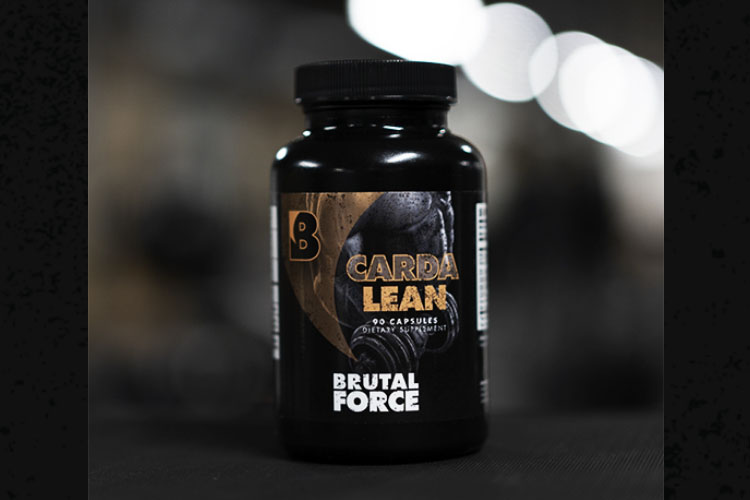
Dies führt zu einer erhöhten Fettverbrennung und somit zu einem fettarmen Aussehen und einer besseren Ausdauer, weshalb Cardarine gerne von Ausdauersportlern eingenommen wird. Es hat jedoch noch viele andere positive Wirkungen und hat auch die Fähigkeit Risiken auf bestimmte Krankheiten zu vermindern.
Cardarine wird von Bodybuildern und Athleten gerne als Ergänzungsmittel eingenommen, um Fitnessziele schneller zu realisieren. Es kann aber auch zur Behandlung von Krankheiten, wie beispielsweise Fettleibigkeit, eingenommen werden.
Was versteht man unter Peroxisome Proliferator-Activated Reseptor Delta?
PPAR sind im menschlichen Organismus weit verbreitet, jedoch bisher nicht wirklich als Transkriptionsfaktoren bekannt. PPAR fördert die Bildung neuer Mitochondrien, verbessert die Insulinempfindlichkeit und steigert die beta-Oxidation von Fettsäuren und reguliert somit Glykogen. Es hat außerdem anti-inflammatorische Merkmale. Eine erhöhte Menge dieser Stoffe fördert das Muskelgewebe.
Der Ursprung von Cardarine
GW 501516 wurde erstmals von Glaxo Smith Kline und Lagand Pharmaceuticals im Jahre 1992 entwickelt. Durch die Bindung an den PPAR-Rezeptor, wirkt sich das Medikament auf die Energieausgabe aus und führt somit zu einem erhöhten Fettsäurestoffwechsel. Cardarine bietet außerdem einen Schutz vor Typ 2-Diabetes.
Der Wirkstoff GW 501516 wurde grundsätzlich zur Behandlung von Diabetes, Fettleibigkeit und Fettstoffwechselstörungen entwickelt. Geforscht wurde mittels Tierversuchen, wobei festgestellt wurde, dass es zu einer starken Regulation des Fettstoffwechsels führte, bei dem die Versuchstiere Fett abbauten.
Dabei entstand jedoch keine katabole Wirkung (muskelabbauende Wirkung). Die Versuchstiere zeigten eine Glukose Ablagerung in der Skelettmuskulatur mit einer gleichzeitigen Zunahme der Muskelmasse, weshalb Cardarine heutzutage sehr gerne von Ausdauersportlern und Bodybuildern als Ergänzungsmittel verwendet wird.
Für was wird Cardarine verwendet?
Cardarine wird vor allem im Sport als Ergänzungsmittel eingenommen, denn es hat unglaubliche Wirkungen. Eine regelmäßige Einnahme dieses Produktes führt zu einer wesentlich besseren Ausdauer. Für Cardio-Junkies eignet sich Cardarine deshalb besonders gut, denn es hilft nicht nur beim Abnehmen, sondern erhöht auch die Laufzeiten.
Wenn Fett abzubauen eines der Ziele ist, wirkt das Medikament ebenfalls wahre Wunder. Der Fettabbau durch GW 501016 funktioniert aufgrund der erhöhten Glukoseaufnahme in der Skelettmuskulatur. Somit werden die Nährstoffe unter der Einnahme von Cardarine besser genutzt und Fette anstatt Kohlenhydrate (Glucose) zur Verbrennung herangezogen.
Zur gleichen Zeit wird eine höhere Menge an Glucose in der Skelettmuskulatur aufgenommen, was zu einem fettarmen und vollen Aussehen führt. Cardarine hat viele positive Eigenschaften, weshalb sich viele Medikamentenkonzerne eine Legalisierung dieses Medikamentes stark erhoffen und hart daran arbeiten.
Wie wirkt Cardarine?
Cardarine ist ein selektiver Agonist mit einer starken Potenz und Affinität. Das Medikament wirkt auf die Regulierung von Proteinen im Körper, welche für die Energiebereitstellung verantwortlich sind. Somit ist GW 501516 dazu in der Lage den gesamten Metabolismus (Fettstoffwechsel) stark zu beschleunigen. Cardarine erhöht außerdem HDL (gutes Cholesterin und verringert LDL (schlechtes Cholesterin).
Welche Vorteile hat Cardarine?
Cardarine hat unglaublich viele Vorteile, weshalb es auch ein sehr beliebtes Ergänzungsmittel im Fitnessbereich ist. Ein wichtiger Vorteil ist, dass Cardarine das Gehirn schützt und die Entwicklung von Nervenzellen vorantreibt. Das Herz profitiert von dem Medikament ebenfalls, da es das Herz vor oxidativen Schäden schützt und auch das Risiko auf Atherosklerose vermindert.
Cardarine erhöht den Stoffwechsel, indem es den Abbau von Fettsäuren und den Energieverbrauch in den Muskeln erhöht. Somit wird das Medikament auch zur Behandlung von Fettleibigkeit eingesetzt. Ein weiterer Vorteil des Medikaments ist, dass es die Nieren schützt und eventuelle Entzündungen in den Nierenzellen stark vermindert. GW 501016 hilft auch dem Immunsystem, da es Entzündungen aller Art unterdrückt. Es unterstützt unter anderem auch den Wundheilungsprozess bei Verletzungen.
Cardarine verbessert das Wachstum der Muskeln und die Ausdauer und erhöht somit die allgemeine körperliche Leistungsfähigkeit. Weitere Vorteile sind, dass das Medikament die Heilung von Hautkrankheiten unterstützt und auch die Wundheilung verbessert. Die Droge hat ein antioxidatives und entzündungshemmendes Potential und hat im Gegensatz zu anderen anabolen Steroiden nur wenige und vergleichbar harmlose Nebenwirkungen.
Zusätzlich sollte Cardarine laut Anwender zu einem Fettabbau führen und das sogar ohne Diät. Die Ergebnisse steigern sich außerdem mit jeder Anwendungswoche. Cardarine ist ein wirklich vielversprechendes Medikament, auch wenn es bisher noch keine langzeit Forschungen, welche am Menschen durchgeführt wurden, gibt.
Hier sind noch einmal die wichtigsten Wirkungen im Überblick:
- Erhöht die Ausdauer
- Steigert den Muskelaufbau
- Wirkt positiv auf die Fetverbrennung
- Antikatabole Wirkung
- Steigert den Stoffwechsel
- Erhöht die Energie
- Stärkt das Immunsystem
- Beschleunigt den Heilungsprozess
- Vermindert das Risiko auf Krankheiten wie Atherosklerose und Diabetes Typ-2
Hat Cardarine Nebenwirkungen?
Bei einer Einnahme jedes Medikamentes können natürlich auch Nebenwirkungen auftreten. Meistens treten diese Nebenwirkungen nur dann auf, wenn die Einnahmebedingungen nicht beachtet werden und es zu einer Überdosierung des Medikaments kommt.
Wenn man jedoch die Einnahmebedingungen genauestens beachtet, sollte es im Normalfall zu keinen Nebenwirkungen kommen.
Cardarine wurde bis jetzt nur an Mäusen getestet, wobei ein paar wenige Nebenwirkungen zum Vorschein kamen. Das Medikament sollte nicht von Personen mit Leberkrankheiten eingenommen werden.
In manchen Studien wurde durch Tierversuche festgestellt, dass der Wirkstoff Krebs durch eine Einnahme von Cardarine schneller entwickelt werden kann, weshalb das Medikament sich nicht für Menschen mit bereits vorhandenen Tumoren empfiehlt. Es wurde jedoch nicht bewiesen, dass dies auch bei dem Menschen der Fall ist. Bei einer Einnahme von Cardarine ist es wichtig auf seinen eigenen Körper zu hören.
Wie wird Cardarine richtig dosiert?
Für die individuell beste Dosierung spielen mehrere Faktoren eine große Rolle, zum einen die Körpermasse und zum anderen die Ziele. Möchtest du mit der Einnahme des Wirkstoffes GW 501516 eine höhere Ausdauer oder eine gesteigerte Fettverbrennung erreichen?
Wenn dein Ziel eine erhöhte Ausdauer ist, werden 10mg täglich empfohlen. Wenn dein Ziel eine gesteigerte Fettverbrennung ist, werden 20mg pro Tag empfohlen. Die Einnahme erfolgt normalerweise für einen Zyklus von 12 Wochen.

Danach sollte man definitiv für mindestens ein Monat pausieren, bevor mit einem weiteren Zyklus begonnen wird. Grundsätzlich wird jedoch empfohlen mit 10mg pro Tag zu beginnen und diese Dosierung bei Bedarf nach einiger Zeit auf 20mg zu erhöhen.
Die Einnahme sollte auch immer um die gleiche Zeit erfolgen. Eine Einnahme 30 Minuten vor dem Training sollte laut Erfahrung einen Energieschub bezwecken und ist deshalb sehr zu empfehlen. Cardarine kann sowohl von Männern, als auch von Frauen eingenommen werden und hat für beide Geschlechter die gleichen Vorteile.
Die Dosierung ändert sich zwischen den Geschlechtern grundsätzlich auch nicht. Cardarine ist eine Flüssigkeit, welche am besten direkt in den Mund gespritzt wird und mit Saft oder Wasser nachgespült wird. GW 501516 wird auch gerne in Verbindung mit dem SARM Ostarine eingenommen.
Ist Cardarine legal?
Cardarine ist noch nicht legalisiert worden und wurde noch nicht offiziell als Medikament zugelassen. Es ist sollte jedoch nicht mehr lange dauern, bis es zu einer Legalisierung von Cardarine kommt.
Profisportler dürfen Cardarine nicht einnehmen, da der Wirkstoff auf der Dopingliste steht.
Solange jedoch keine Wettkampfteilnahme unter Einfluss von Cardarine stattfindet, ist die Einnahme in Ordnung.
Cardarine ist vor allem bei Ausdauersportlern und Bodybuildern sehr beliebt. Durch die Einnahme des Wirkstoffes GW 501516 wird der Fettabbau nämlich wesentlich gesteigert und die Ausdauer erhöht. Das Ergänzungsmittel hilft somit Fitnessziele schneller zu erreichen und diese auch wirklich umzusetzen.
Cardarine ist definitiv sehr empfehlenswert und eine sichere Lösung zu illegalen anabolen Steroiden. Sportler, die sich für die Einnahme dieses Produktes entscheiden, werden mit Sicherheit viele Vorteile genießen und das auch noch ohne gefährlichen Nebenwirkungen.
Es ist jedoch wichtig das Medikament von einer sicheren Quelle zu erwerben und seine Finger vom Schwarzmarkt zu lassen. Für eine Sichere Einnahme des Medikamentes ist es auch essentiell die Einnahmebedingungen genauestens zu beachten.
RAD 140 (Testolone)
RAD 140 wird auch Testolon genannt und dabei handelt es sich um einen SARM (Selektiver Androgen Rezeptor- Modulator). RAD 140 eignet sich um schneller Muskelmasse aufzubauen, die Ausdauer zu verbessern und die Kraft einzelner Indikatoren zu steigern.
Das Medikament wirkt auf das Muskelwachstum und das ohne gefährlichen Nebenwirkungen. RAD 140 ist somit eine sichere Option zu illegalen anabolen Steroiden, da sie die Leber, das Fortpflanzungssystem und das Nervensystem nicht gefährden.
Das Produkt hat auch eine äußerst positive Wirkung auf den Stoffwechsel und beschleunigt somit die Regeneration geschädigten Gewebes. RAD 140 wirkt fast gleich wie Testosteron, nur ohne Nebenwirkungen.
RAD 140 wurde erstmals im Jahre 2010 veröffentlicht. Das Medikament wird zurzeit von dem Pharmaunternehmen Radius hergestellt und ist äußerst vielversprechend für den Muskelaufbau.
Viele Bodybuilder und Fitnessliebhaber haben dasselbe Ziel, und zwar eine verbesserte Leistung und verbesserte körperliche Ergebnisse. Um diese Ziele schnell und sicher zu erreichen, sind SARMs eine ausgezeichnete Methode. In den letzten Jahren haben sich SARMs äußerst beliebt gemacht und erzielen ähnliche Ergebnisse, wie anabole Steroide, nur ohne gefährlichen Nebenwirkungen.
Wie wirkt RAD 140?
RAD 140 ist ein selektiver Androgen Rezeptor Modulator und wirkt deshalb sehr selektiv und stimuliert somit nur die Androgenrezeptoren in den Knochen und Muskeln.
Ziel dieses Stoffes ist es, gesundheitliche Vorteile von anabolen Steroiden ohne deren Nebenwirkungen zu geben.
Das Problem mit anabolen Steroiden ist, dass sie nicht nur die Knochen und Muskeln beeinflussen, sondern auch die Fortpflanzungsorgane, die Leber und das zentrale Nervensystem. Deshalb sind diese illegalen Medikamente auch sehr gefährlich für die Gesundheit, denn eine Einnahme anaboler Steroiden kann zu Impotenz, Leberkrankheiten oder Schrumpfhoden führen.
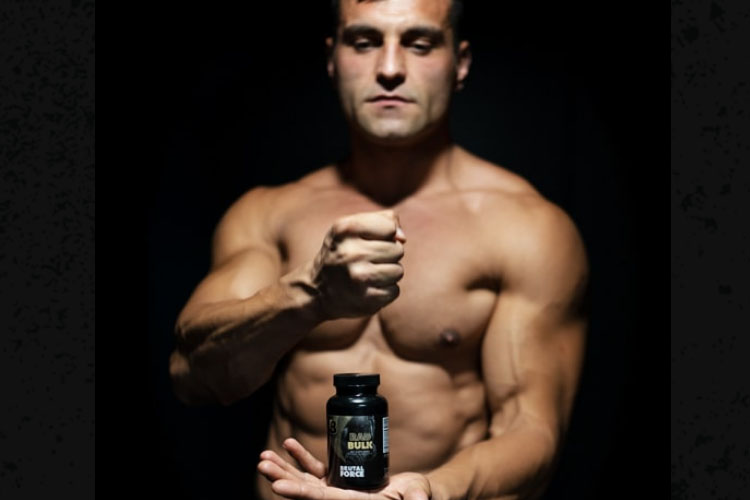
RAD 140 ist selektiv und durch die Bindung des Wirkstoffes werden verschiedene Proteine im Körper freigesetzt. Diese Proteine können die Wirkung des Medikamentes am Androgenrezeptor entweder initiieren oder inhibieren. Somit werden nicht alle Androgenrezeptoren im Körper aktiviert, sondern nur ein paar ausgewählte.
Testolon bindet sich somit selektiv an Androgenrezeptoren im Muskel- und Knochengewebe und stimuliert anabole Aktivität und Wachstum.
Ein weiterer Vorteil ist, dass RAD 140 nicht in andere Hormone umgewandelt werden, kann, sowie es bei anabolen Steroiden der Fall ist.
Das Medikament wirkt positiv auf Knochen und Muskeln, ohne dabei die Leberenzyme zu erhöhen. Auch wenn RAD 140 bis jetzt nur an Mäusen und Ratten getestet wurde, sind die Ergebnisse äußerst vielversprechend und Pharmakonzerne arbeiten hart an einer Legalisierung des Wirkstoffes.
Warum RAD 140 einnehmen?
RAD 140 hat viele positive Wirkungen und eignet sich besonders für Bodybuilder und andere Fitnessliebhaber. Leider spritzen sich viele davon anabole Steroide, welche gefährliche Nebenwirkungen erzeugen.
RAD 140 ist eine sichere Alternative, die Fitness-Enthusiasten dabei hilft Muskeln schneller aufzubauen und die Regeneration zu beschleunigen.
Hier sind Gründe gelistet, weshalb man RAD 140 einnehmen sollte.
Muskelmasse aufbauen
Bei RAD 140 handelt es sich um ein Pulver, welches oral eingenommen wird und dabei hilft Muskeln schneller aufzubauen.
Fettverbrennung
Wenn eines der Ziele Fettverlust und Gewichtsabnahme ist, kann das Pulver ebenfalls sehr hilfreich sein. RAD 140 ist in der Lage Fettgewebe durch eine Erhöhung der Muskelmasse zu verringern.
Weniger Nebenwirkungen
RAD 140 wird vor allem von gesundheitsbewussten Bodybuildern eingenommen, da die Nebenwirkungen wesentlich geringer und ungefährlicher sind, als die von anabolen Steroiden. So sind die Wirkungen zwar sehr ähnlich, die Nebenwirkungen jedoch wesentlich geringer.
Neuroprotective Eigenschaften
RAD 140 hat positive Wirkungen auf das Gehirn und führt zu einer Prävention von neurodegenerativen Erkrankungen. Eine weitere positive Eigenschaft des Medikaments ist, dass es den Zelltod nach einem Schlaganfall sehr stark reduziert.
Für wen eignet sich RAD 140?
Das Medikament eignet sich für jede die zwischen den Steroidzyklen überbrücken möchten, ohne dabei den HPTA zu schädigen. RAD 140 eignet sich auch für Bodybuilder, die ein leistungssteigendes Medikament einnehmen möchten, jedoch ohne gefährliche Nebenwirkungen.
Es empfiehlt sich auch für Personen, die sehr empfindlich auf Gynäkomastie sind. Das Pulver ist nämlich ähnlich wie Testosteron, jedoch ohne östrogene Nebenwirkungen, da es nicht in Östrogen umgewandelt werden kann.
Welche Vorteile hat RAD 140?
RAD 140 hat unglaublich viele Vorteile und ist deshalb bei Bodybuildern und Athleten sehr beliebt. Eine regelmäßige Einnahme des Medikaments steigert die Ausdauer, die Geschwindigkeit und die Kraft. Es hilft ebenfalls dabei effektiv Muskelmasse aufzunehmen, ohne diese dabei schnell wieder zu verlieren.
RAD 140 erhöht außerdem den allgemeinen Ton des Organismus und regt auch die Fettverbrennung an. Das Produkt kann sowohl von Männern, als auch von Frauen eingenommen werden und bewirkt zudem auch noch dieselben Effekte.
RAD 140 verbessert die Blutzirkulation und verhindert biochemische und physiologische neuronale Schäden im Körper.
Ein weiterer Vorteil ist, dass das Medikament sich nicht auf das hormonelle Gleichgewicht auswirkt und auch keine negativen Auswirkungen auf die Leber hat. Somit ist das Produkt eine ideale Lösung zu gefährlichen anabolen Steroiden.
RAD 140 hat aber auch viele medizinische Vorteile und eignet sich Muskelschwund, Sarkopenie und androgene Defizite zu behandeln.
Kann RAD 140 von Frauen eingenommen werden?
RAD 140 hat den gleichen selektiven Wirkungsmechanismus, wie auch alle anderen SARMs (Selektive Androgen Modulator Rezeptoren) und hat somit eine anabole Wirkung ohne gefährlichen Nebenwirkungen, die bei anabolen Steroiden auftreten.
Zu diesen Nebenwirkungen zählen, Haarausfall, eine Prostatavergrößerung und eine Unterdrückung der Testosteronproduktion.

RAD 140 wirkt selektiv und bindet deshalb nur an bestimmten Androgenrezeptoren und zwar ausschließlich im Muskel- und Knochengewebe. Andere Bereiche im Körper werden somit nicht belastet und weniger Nebenwirkungen können bei der Einnahme von RAD 140 zum Vorschein kommen.
Aufgrund der selektiven Wirkungsweise des Pulvers ist auch eine Einnahme von Frauen sicher, da es die Geschlechtsorgane nicht beschädigen kann.
Wie wird RAD 140 richtig dosiert?
RAD 140 ist eine Flüssigkeit, die sich ganz einfach in den Mund tropfen lässt und anschließend mit einem vollen Glas Wasser oder Saft nachgespült werden kann. Das Medikament gibt es jedoch auch in einer Pulverform, die ebenfalls oral eingenommen wird. Eine tägliche Einnahme ist hierbei sehr wichtig, um die besten Ergebnisse zu erzielen.
Es wird grundsätzlich eine tägliche Einnahme von 20mg und 30mg empfohlen. Hierbei sollte man zuerst mit einer geringeren Dosierung beginnen, um zu testen wie der Körper auf das Medikament reagiert und nach den ersten Wochen bei Bedarf zu einer höheren Dosierung greifen. Somit sollte die Dosierung Schrittweise erhöht werden, sodass sich der Körper an das Medikament gewöhnen kann.
Die Halbwertszeit von RAD 140 beträgt zwischen 12 und 18 Stunden. Die Körpermasse und die eigenen Ziele spielen bei der Dosierung ebenfalls eine große Rolle. Höhere Dosierungen führen meist zu besseren Ergebnissen.
Das Pulver sollte nicht länger als 12 Wochen eingenommen werden. Einige Anwender bevorzugen auch einen 8- Wochen- Zyklus. Nach dem vollen Zyklus sollte man 4-12 Wochen pausieren. Anschließend kann mit einem neuen Zyklus begonnen werden.
Für Bodybuilder und Athleten die noch nie zuvor ein SARM eingenommen haben, ist es oftmals sehr hilfreich sich von einem Coach konsultieren zu lassen, bevor RAD 140 angewendet wird.
Wichtig ist es die Flüssigkeit direkt in den Mund fallen zu lassen und nicht in einem Glas zu mischen, da die Flüssigkeit an den Seiten des Glases haftenbleiben kann. Der Geschmack ist nicht gerade angenehm, weshalb die Flüssigkeit Saft nachgespült werden kann.
Können bei einer Einnahme von RAD 140 Nebenwirkungen auftreten?
Natürlich ist auch dieses Medikament nicht völlig frei von Nebenwirkungen. Es wird jedoch gesagt, dass es sich bei RAD 140 um eines der sichersten auf dem Markt erhältlichen leistungssteigernden Drogen ist. Das Produkt verursacht nämlich keine Unterdrückung und so gut wie keine Nebenwirkungen.
Es sollte immer auf die vorgeschriebenen Einnahmebedingungen geachtet werden, um mögliche Nebenwirkungen zu vermeiden.
RAD 140 ist definitiv sehr zu empfehlen und zählt außerdem zu den am vielversprechendsten leistungssteigenden Medikamenten der letzten Zeit. Der Wirkstoff hat alle Merkmale, um zu einer starken und effektiven Ergänzung zu werden.
Für Bodybuilder, die ihre Kraft und Leistung verbessern möchten, sowie schneller Muskeln aufbauen möchten, ist RAD 140 eine ideale Möglichkeit diese Ziele zu erreichen. RAD 140 ist aber auch im medizinischen Bereich sehr hilfreich und kann dabei helfen verschiedenste neurodegenerative Krankheiten zu behandeln.
Der Wirkstoff hat auch die unglaubliche Fähigkeit den massiven Zelltod, der vor allem nach einem Schlaganfall häufig auftretet, zu bekämpfen. RAD 140 ist somit ein unglaubliches Erfolgserlebnis und empfehlenswert in verschiedensten Hinsichten.
Das Pulver ist auch wesentlich sicherer als anabole Steroide und muss zudem auch nicht gespritzt werden. Es eignet sich somit als ideales und sicheres Ergänzungsmittel für Kraftsportler und als Behandlung von verschiedenen Krankheiten.
Wie funktionieren SARMs?
SARMs wirken auf chemische Botenstoffe, den sogenannten Hormonen. Der Körper benötigt Hormone, um mit verschiedensten Zellen zu kommunizieren. Hormone erhalten Nachrichten und geben diese an bestimmte Zellen weiter, welche anschließend verschiedenste Befehle ausführen.
Bei Androgenen handelt es sich um Hormone, die beispielsweise die Stimme, die Muskeln und die Gesichtsbehaarung beeinflussen. Das männliche Geschlechtshormon Testosteron ist eines der bekanntesten Androgenen. Normalerweise reguliert der Körper die Produktion der Androgene selbstständig. Bei einer zusätzlichen Zuführung von anabolen Steroiden kommt es zu einem Ungleichgewicht, weshalb beispielsweise Muskelzellen auf einmal viel schneller wachsen.
Das ist zwar genau das, was sich die meisten Bodybuilder wünschen, jedoch gibt es viele Nebenwirkungen von Steroiden, die auch zu dauerhaften Schäden führen können. Eine regelmäßige Einnahme dieser Ergänzungsmittel kann auch zu einer psychischen und körperlichen Abhängigkeit führen.
Aus diesen Gründen versuchen Forscher schon seit Jahren eine Droge zu entwickeln, die den Steroiden zwar ähnelt, jedoch viel sicherer für die Gesundheit ist, den sogenannten SARMs. Sie reagieren nämlich aufgrund ihrer speziellen Anziehungskraft hauptsächlich auf Muskel- und Knochenzellen und nur sehr gering auf andere Zellen im Körper, wie beispielsweise Prostata und Leber.
So können diese Wirkstoffe Muskeln zum Wachsen bringen, ohne dabei für Unordnung im Körper zu sorgen. Ein weiter Vorteil von SARMs ist, dass der Körper diese Stoffe nicht so schnell in gefährliche Moleküle umwandeln kann, welche ebenfalls Nebenwirkungen hervorrufen können.
Sind SARMS Steroide?
Nein, SARMs sind keine Steroide, jedoch werden sie oft gerne damit verwechselt. Ein SARM kann zwar ein Steroid sein, jedoch handelt es sich bei SARMs, die es auf dem Markt gibt, um nicht-steroidale Selektive Androgen Rezeptor Modulatoren.
Das bedeutet, dass sie keine 4-Ring Basis und auch keinen Steroid-Nukleus besitzen, sie in verschiedenen Geweben aktiv sein können. Sie besitzen ebenfalls die Fähigkeit an den Androgenrezeptor anzudocken und diesen zu aktivieren oder zu modulieren.
Wofür sind SARMs?
SARMs wurden grundsätzlich zur Heilung von Muskelschwund, Anämie, Osteoporose und anderen Erkrankungen entwickelt. Sie werden jedoch gerne von Bodybuildern als Ergänzungsmittel eingenommen, um schneller Muskelmasse aufzubauen und Fett zu verbrennen.
Diese leistungssteigernde Droge sollte auch vor allem in der Definitionsphase von besonderer Effektivität sein. SARMs sind aber auch deshalb so beliebt, weil sie ohne die vielen Nebenwirkungen genauso tolle Ergebnisse erzielen wie anabole Steroide. Die Ergebnisse mögen vielleicht nicht die gleichen sein, jedoch sind sie wesentlich wirkungsvoller als natürliche Wirkstoffe.
Warum SARMs und nicht anabole Steroide?
Anabole Steroide werden auch Anabolika bezeichnet und es handelt sich dabei um synthetische Substanzen, die dem männlichen Sexualhormon Testosteron sehr ähnlich sind. Dieses Medikament verstärkt den Eiweiß-Aufbau, vermindert jedoch den Abbau körpereigener Eiweißvorräte. Vorallem bei intensiven Bodybuildern sind anabole Steroide deswegen sehr beliebt, da sie den Aufbau an Muskelmasse stark beeinflussen. Anabole Steroide kommen jedoch mit vielen Nebenwirkungen, die gefährlich für den Körper sind, darunter:
- Hautreaktionen wie Akne
- Haarausfall
- Gynäkomastie
- Schrumpfhoden
- Depressionen
- erhöhte Schweißproduktion
- Thrombosen
- Panik-Attacken
- Thrombosen
- Arteriosklerose
- Schlaganfall
- Herzinfarkt
Bei einer regelmäßigen Einnahme von anabolen Steroiden über eine längere Zeit können sich auch die Leber-und Blutfettwerte stark verschlechtern. Besonders gefährlich sind diese Medikamente für junge Menschen, die sich noch im Wachstum befinden, da sie das Knochenwachstum stark beeinflussen können.
Wie man sieht haben anabole Steroide eine lange Liste an Nachteilen und negativen Auswirkungen, weswegen SARMs eine ideale Lösung sind. Die
Selective Androgen Receptor Modulators sind eine viel sicherere Option, die zu den gleichen Ergebnissen führen können, jedoch auf eine langsamere und sicherere Art und Weise.
Selektive Anrogenrezeptor-Modulatoren belasten die Organe nicht, sie stellen die Hypothalamus-Hypophysen-Testes-Achse (HPTA) nicht ab, sie bewirken keine langfristigen Fortpflanzungsschäden, sie verursachen keine Gefahren für die Prostata, sie beeinflussen das Haarwachstum nicht, sie sind gut für die Knochen, Gelenke und Bänder und sie verursachen keine Aggressionen oder Wutausbrüche sowie es oft der Fall bei anabolen Steroiden ist.
Sind SARMs in Deutschland legal?
Zurzeit sind SARMs noch nicht als Arzneimittel zugelassen, jedoch werden sie von chinesischen und amerikanischen Herstellern vertrieben. Es ist sehr wichtig, SARMs ausschließlich von vertrauenswürdigen Orten zu erwerben, da Medikamente vom Schwarzmarkt sehr gefährlich sein können.
Haben SARMs gar keine Nebenwirkungen?
Natürlich haben auch SARMs gewisse Nebenwirkungen. Jedes Medikament mit einer Wirkung kommt auch mit möglichen Nebenwirkungen. Leider gibt es jedoch noch nicht genügende Untersuchungen, um zu wissen wie genau die Selektive Androgenrezeptor-Modulatoren wirken und welche langfristigen Nebenwirkungen auftreten können.
Was aber festgestellt wurde ist, dass diese Droge, wie auch viele andere Drogen, die natürliche Testosteronproduktion des Körpers unterdrückt. Deshalb ist es sehr wichtig die Einnahmebedingungen zu beachten.
Das Gute ist, dass sich der Körper bei Absetzung des Medikaments sehr schnell erholt.
Jedoch gilt auch bei dieser Droge: Die Dosierung macht das Gift. Was bedeutet, dass bei einer richtigen Dosierung grundsätzlich keine Nebenwirkungen auftreten sollten.
Fazit
SARMs sind leistungssteigernde Medikamente, die definitiv positiver wirken als viele andere anabole Steroide. Aufgrund ihrer geringen Nebenwirkungen sind sie deshalb auch um einiges sicherer.
Die meisten SARMs Studien basieren bis jetzt nur auf Tests, die auf Ratten durchgeführt wurden. Auch wenn es bis jetzt noch keine langfristigen Auswirkungen der Einnahme des Wirkstoffes an Menschen gibt, scheinen SARMs trotzdem sehr erfolgsversprechend.
SARMs sind eine unglaubliche und weniger schädlichere Alternative zu Steroiden und sind ein tolles Ergänzungsmittel für den gesundheitsbewussten Bodybuilder.
Die Selective Androgen Receptor Modulators können auch von Frauen eingenommen werden, wobei vorallem GW501516-Cardarine mit LGD4033-Anabolicum bevorzugt werden. Diese Drogen helfen Frauen Fett zu verlieren, Muskel aufzubauen und stärker zu werden.
Mit der Entwicklung von SARMs wurde definitiv ein Meilenstein erreicht. Wichtig ist es jedoch auf legitime Ware zurückzugreifen.
SARMs ist eine neue Droge und kommt deshalb natürlich auch mit höheren Risiken. Deshalb sollte auf das eigene Urteilsvermögen und auf den eigenen Körper gehört werden. Du kennst deinen eigenen Körper nämlich am besten!



